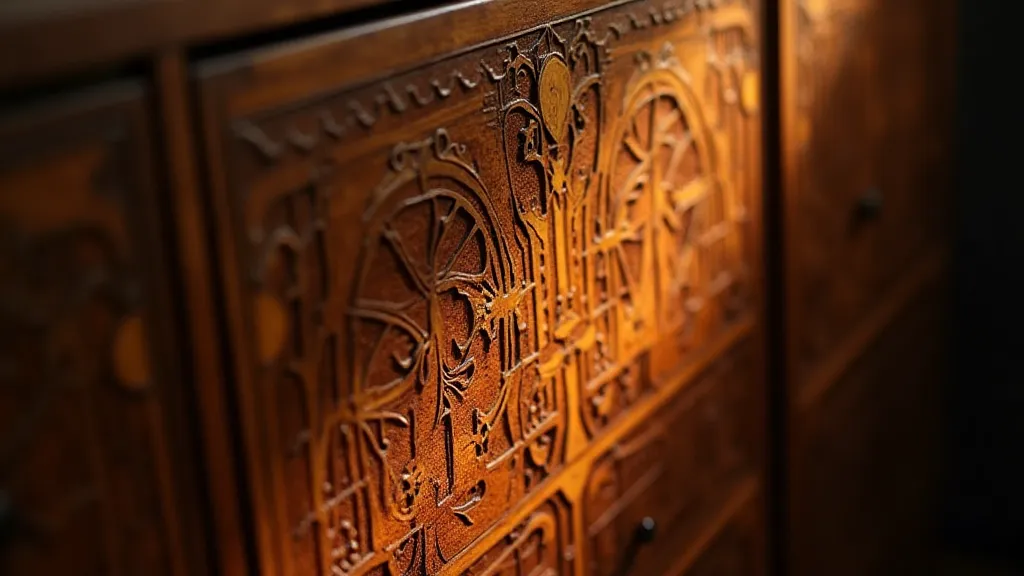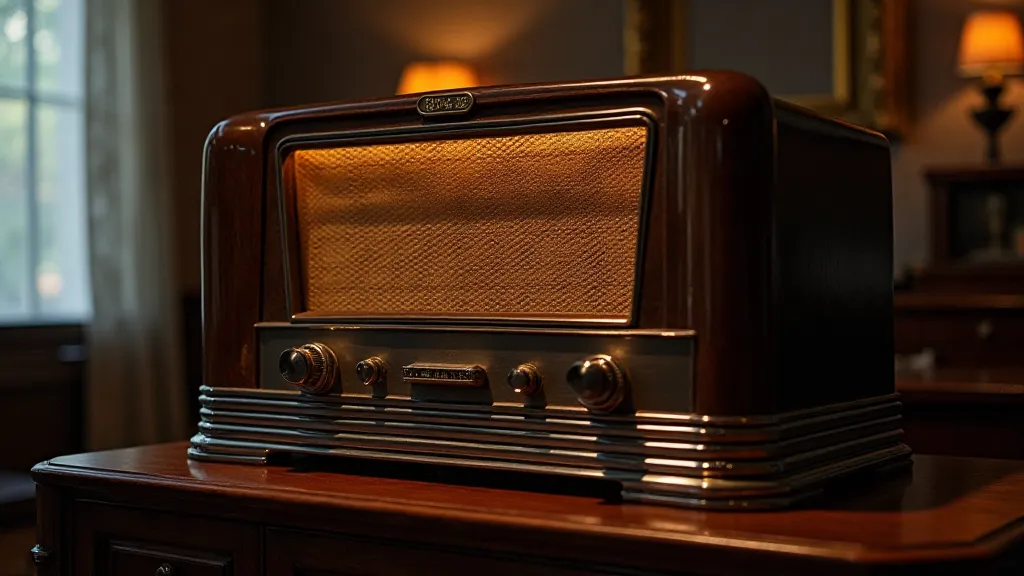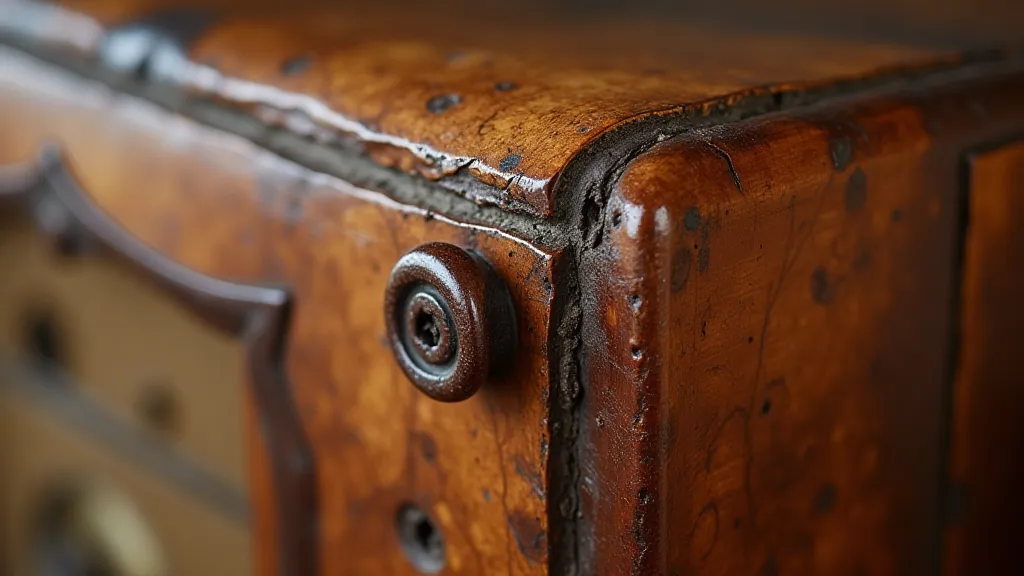A Cabinet of Curiosities: Beyond the Functionality – The Art Deco Radio Aesthetic
There's a certain magic that emanates from an antique radio. It’s not just the potential for crackling music or the faint hum of vacuum tubes – it's the sheer artistry of the object itself. We often think of radios as tools, devices built for a singular purpose: broadcasting sound. But in their heyday, particularly during the 1920s and 30s, radios were status symbols, sculptures crafted to be admired as much as enjoyed. And nowhere is this more apparent than in the exquisite detailing of their cabinets.
I remember the first time I truly appreciated this. My grandfather, a quiet man of meticulous detail, had a Philco 713 in his workshop. It wasn’t playing, of course. It was silent, dusty, and seemingly forgotten. As a child, I saw it as just another piece of junk. But he’s the one who patiently taught me to appreciate the beauty of things, to look beyond their immediate purpose. He would run his hand over the walnut veneer, explaining how the grain flowed, how the curves were meticulously carved. It wasn't just a radio; it was a testament to a time when craftsmanship was paramount, when even a household appliance could be a work of art.
The Rise of Radio and the Dawn of a New Aesthetic
The early 1920s marked the beginning of the radio broadcasting era. Suddenly, families could receive entertainment and news directly into their homes. Radios quickly became a must-have item, and manufacturers realized that simply producing a functional device wasn’t enough. They needed to entice consumers, and a beautifully designed cabinet became the key. This coincided perfectly with the burgeoning Art Deco movement.
Art Deco, with its geometric patterns, stylized motifs, and opulent materials, resonated with the spirit of the Roaring Twenties. Radios became canvases for this new aesthetic. You’re seeing the influence of Egyptian Revival, inspired by the discovery of Tutankhamun’s tomb in 1922, with its stepped forms and stylized hieroglyphics. Streamline Moderne, evolving in the 1930s, introduced a more aerodynamic, flowing style, reflecting the fascination with speed and modernity. Think long, horizontal lines, rounded edges, and accents resembling chrome or polished metal.

Materials and Techniques: A Symphony of Skill
The construction of these cabinets was a testament to the skills of the artisans involved. High-quality hardwoods like walnut, mahogany, and cherry were favored for their rich color and ability to be intricately carved. Veneering techniques were refined, allowing for complex patterns to be applied to less expensive base materials. Sometimes, exotic woods like Macassar ebony, known for its deep, almost black hue, were used to create a truly luxurious feel.
Beyond the wood itself, the detailing was often exquisite. Bakelite, a revolutionary early plastic, was used for knobs, dials, and accents, offering a range of colors and a smooth, tactile feel. These components, often brightly colored to contrast with the darker wood, added a playful element to the overall design. Metal trim, often plated in chrome or nickel, added a sense of glamour and sophistication. Hand-painted details, though less common, occasionally appeared on larger models, adding another layer of artistry.
Think about the sheer number of hands involved in the creation of a single radio. There were the cabinet makers, the veneer applicators, the detail carvers, the metal finishers, the painters, and the assemblers. Each artisan brought their unique skills to the table, contributing to a final product that was far greater than the sum of its parts.
The Legacy of Style: Identifying Key Design Elements
Identifying the stylistic influences on antique radios can be a fascinating journey for collectors and restoration enthusiasts alike. Here are a few key elements to look for:
- Egyptian Revival: Stepped forms, sunburst motifs, stylized hieroglyphics, and the use of black and gold color schemes.
- Art Deco: Geometric patterns, zigzags, chevrons, stylized floral and animal motifs, and the use of luxurious materials like exotic woods and Bakelite.
- Streamline Moderne: Horizontal lines, rounded corners, chrome accents, and a sense of forward motion. Often found on larger, console-style radios.
- Figural Radios: These are the rarest and most sought-after, featuring sculpted figures – often women – incorporated into the cabinet design.

Restoration and Preservation: Honoring the Past
Restoring an antique radio is about more than just getting it to play music. It's about preserving a piece of history, a tangible link to a bygone era. When approaching a restoration project, it’s crucial to respect the original design and materials. While replacement parts may sometimes be necessary, strive to maintain the original cabinet finish whenever possible. Aggressive sanding or refinishing can erase the subtle patina that has developed over decades, diminishing the radio’s character and value.
Understanding the construction techniques of the period is also essential. Knowing how the cabinet was assembled, how the veneer was applied, and how the finish was applied can inform your restoration efforts. There's a deep satisfaction in unraveling these mysteries and bringing a silent relic back to life, not just functionally, but aesthetically as well.
For collectors, appreciating the Art Deco radio aesthetic isn’s solely about owning a beautiful object. It’s about connecting with the spirit of innovation and artistry that defined an era. It's about recognizing the dedication and skill that went into creating these remarkable pieces of functional art. And, perhaps most importantly, it's about honoring the past while celebrating the enduring beauty of a truly iconic design.






